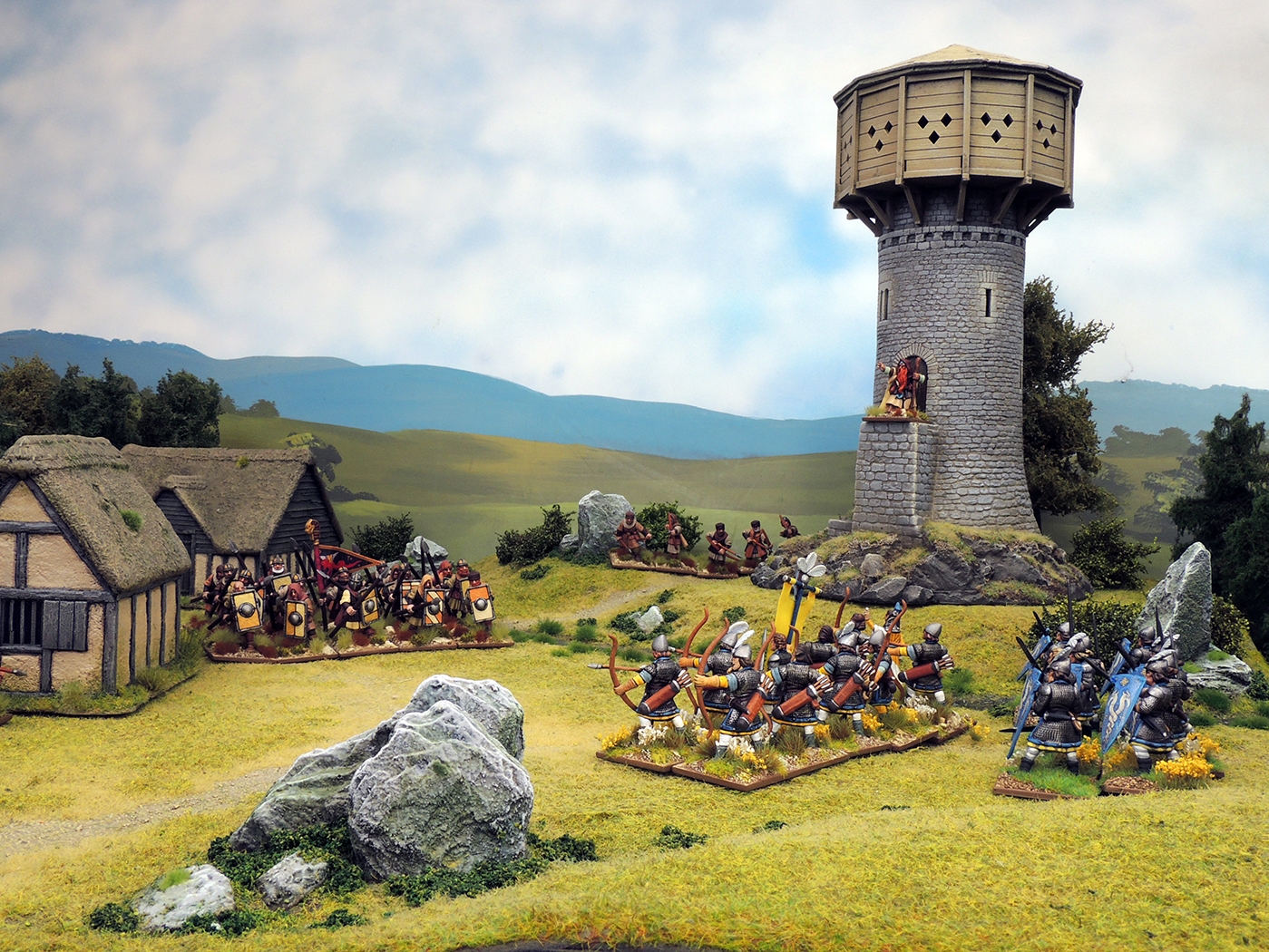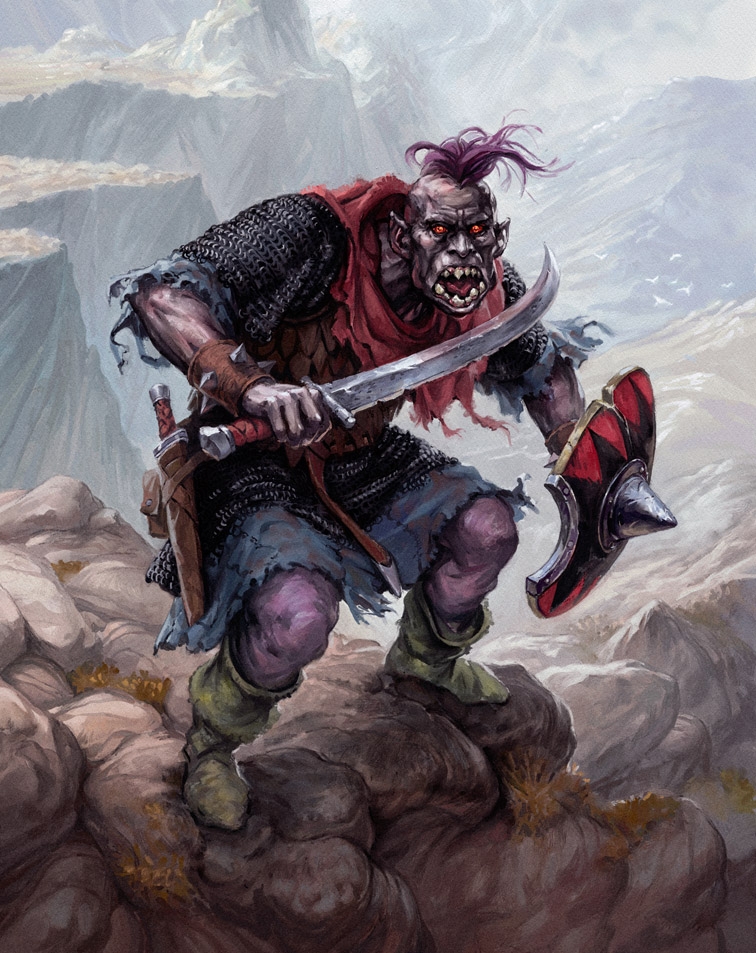Having given us a look at his Oathmark design goals, author Joseph A. McCullough is back on the blog to look at combat in his upcoming mass-battle fantasy wargame.
Once I had my Oathmark ‘Design Goals’ in place, the next question was, ‘Where Do I Start’. Although I’ve written a few games, I knew that Oathmark would be more difficult and complex than anything I had worked on before. Despite this, the actual design process is basically the same for all games: pick one little piece, create that, then pick another and try to get it to fit with the first one. Then repeat, modifying what you’ve done as necessary, until you’ve done all the pieces.
So, to begin, I asked myself a question: ‘What collection of dice would be the most fun to roll during combat?’
Traditionally, mass-battle games have gone with either a ‘bucket of dice’ approach or rolling one die for the unit. Neither of these completely appealed to me. Rolling a bucket of dice can be fun once-in-a-while, but over the course of a game it can quickly become tedious to gather all of the dice, roll them, and then count up all of the results. It tends to slow the game down. That said, I like the idea of rolling only a single die for my unit of 20 dwarves even less. I mean, 20 dwarves deserve more than one die, don’t they?

I decided that the best answer lay somewhere between – a small handful. I eventually settled on 5. It’s enough dice to feel like you are making a serious attack, but not so many that you can’t roll them with one hand. It also fit neatly with the growing idea that most units in the game would be arranged into ranks of five figures.
You won’t always roll five dice during a combat, but you will in most of them!

Artwork by Jan Pospíšil
Of course, once I knew how many dice, I had to decide which type. Players who know me from Frostgrave will probably be surprised to hear that I haven’t used d20s. No, reading 5d20, especially if there are modifiers, is a big ask for your brain. Conversely, I didn’t want d6 because I wanted more potential outcomes. So, I settled on d10. This die has a lot of advantages. Not only does it have more potential outcomes than a d6, but the probability of those outcomes is more intuitive. Added to this, most people are trained from birth to think of math in terms of the number 10 (Base 10 and all that), and thus maths in and around that number is generally pretty easy.
So 5d10. That is what you are going to need to play Oathmark. In fact, those are the only dice you will need. That said, one of those 5 should be a different colour than the rest. That’s your ‘Champion Die’, but we will get into that another day…
| Previous: Oathmark Design Goals |
Next: Building Kingdoms in Oathmark |

Comments
You must be logged in to comment on this post. Click here to log in.
Submit your comment